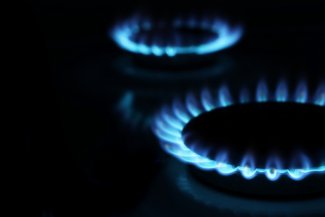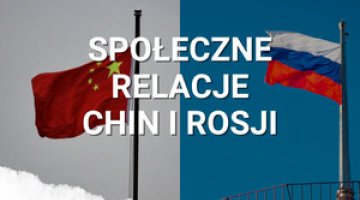From vassalisation to emancipation. Ukrainian-Russian gas co-operation has been revised

The awards by the Arbitration Institute of the Stockholm Chamber of Commerce (further: the Arbitral Tribunal) concerning the contract on gas supplies to Naftogaz and the volume of Russian gas transit via Ukraine have radically changed the model of gas relations between the two countries as they have existed until now. Kyiv’s victory is its crowning achievement in the process of emancipation from Russian dominance in the energy sector which began after the Revolution of Dignity. This has also significantly strengthened Ukraine’s position with regard to Russia and the EU because Gazprom was found to have been in breach of the transit contract. The decisions of the Arbitral Tribunal mark a caesura in the gas co-operation between Ukraine and Russia, which has continued for almost three decades and become infected with corruption, lack of transparency and politically motivated decisions. Since the collapse of the USSR, Ukraine has been dependent on Russian gas supplies, and has been one of Gazprom’s key clients. As long as natural gas remained relatively cheap, this situation was satisfactory to contractors in Ukraine as well, as it offered great opportunities for a section of the Ukrainian political class to build up their fortunes illegally. However, during Vladimir Putin’s presidency (since 2000), Moscow has capitalised many times on Ukraine’s gas dependence to achieve its political goals. The Revolution of Dignity and the war with Russia were breakthrough moments in energy relations with Russia. The new government in Kyiv, unlike all its predecessors, took the risk of entering into a legal dispute with Gazprom.
Ukraine and Russia are entering a new stage of gas relations in 2018, one dictated not so much by a desire to co-operate but rather by the need to do so resulting from contractual obligations with regard to their partners in the EU, the transport infrastructure available, and Ukraine’s income from transit. This co-operation will be very difficult, and will most likely entail further court disputes, as well as periodical cuts in gas supplies, which cannot be ruled out. Kyiv’s new assertiveness, coupled with Moscow’s increasing frustration, give grounds for the assumption that this forced co-operation will not be effective. This will give rise to further problems in both bilateral relations and EU-Ukraine-Russia relations. At the same time, if Nord Stream 2 and Turkish Stream are completed, Russia is likely to become independent of Ukraine’s gas mains in the next five years.
1991-2014: Ukraine as Russia’s gas vassal
Gazprom has always had the dominant position in the two states’ bilateral relations. The company was the sole gas supplier to the Ukrainian market for a long time, and it also transported gas to Europe via the Ukrainian network. Natural gas was relatively cheap for the first fifteen years after the collapse of the USSR. Even though Ukraine reduced its imports, it still imported 70 bcm of gas annually on average. At that time Kyiv was not concerned about limiting consumption or energy efficiency. On the contrary: gas imports from Russia were the source of the largest fortunes among the first wave of Ukrainian oligarchs, and the larger its volumes, the more they earned. Gas import agency services, where corruption was inherent, were also one of the key instruments employed by Russia to influence Ukraine. The deal was mutually beneficial because Ukraine was one of the largest gas sale markets for Russia, and even became the largest individual recipient of Russian gas in 2005-2011; in 2005-2006 the supply volume exceeded 59 bcm (Germany has only held the first position since 2012). Ukraine’s share in Russian gas supplies to foreign markets in 2005-2012 ranged between 17% and 22%.
However, Moscow viewed gas co-operation above all as an instrument of political influence on Ukraine. Before 2014, Moscow capitalised on Kyiv’s gas dependence on numerous occasions to earn political dividends. One example of this was Russia’s reaction to the victory of the so-called Orange Revolution in 2005. That provoked the outbreak of the first serious gas war, resulting in gas supplies to Europe being cut for two weeks, and gas blackmail turned out to be a successful tool of Russian influence in Ukraine. On the one hand, gas prices were raised, and on the other, RosUkrEnergo began acting as an agent in trade relations between Gazprom and Naftogaz. Using its accumulated funds, RosUkrEnergo was able to lobby for Russian interests in Ukraine’s economic and political life.
In turn, in 2009 Gazprom made Kyiv sign extremely unfavourable ten-year contracts covering gas purchase and transit, as well as the so-called ‘fleet for gas’ deal in 2010, as a result of which Russia strengthened its military presence in Crimea[1]. Similarly, in December 2013, at the time of President Yanukovych’s visit to Moscow during the period of massive anti-government demonstrations in Kyiv, Gazprom reduced the price for Naftogaz after the Ukrainian government had decided a few weeks before to suspend the process of signing the Ukraine–EU Association Agreement. These examples prove that Moscow treated gas prices as an instrument for ‘rewarding’ Ukrainian governments loyal to the Kremlin or ‘punishing’ the disloyal ones.
Ukraine was of key significance for Gazprom as a transit route for Russian gas supplied to European recipients, and for many years the company continued its efforts to take control of the Ukrainian gas pipeline network. When these efforts proved unsuccessful, Moscow began implementing the policy of diversifying transit routes, quite consistently since the beginning of this century, thus creating another instrument of political pressure on Kyiv. Whereas in 2003, the share of the Ukrainian gas mains in the transit of Russian gas to Europe reached 89%, it had begun falling at a regular rate from 2006, down to the level of 62% in 2009-2011. The launch of the Nord Stream 1 gas pipeline contributed to the further undermining of Ukraine’s role as a transit country, and its share in Russian gas transit to Europe fell to 47% in 2013.
After the Euromaidan – the emancipation of Naftogaz…
The Revolution of Dignity and the overthrow of Viktor Yanukovych’s government brought about a major staff reshuffle in Ukraine, also covering Naftogaz, the state-owned energy giant which accounts for nearly all of the country’s gas production, gas transport inside the country, and transit of Russian gas to the EU and the injection of Russian gas in gas storages the total capacity of which is 32 bcm. The senior managerial positions were taken by young and vigorous investment bankers who nevertheless already had considerable experience in the gas sector, and the new members of the supervisory board included three Western experts who backed the new management board in their efforts to reorganise the indebted and inefficient corporation.
In June 2014, since no compromise had been reached as regards the gas price for Ukraine and the value of the Ukrainian debt, Gazprom withheld gas supplies and brought a suit against Naftogaz to the Arbitral Tribunal to recover the debt. The management board of Naftogaz also sued Gazprom[2], demanding that a fair gas price be set, and contested the transit conditions in the second suit brought in October. This was an unprecedented move in the history of gas disputes, also regarding the scale – the total value of both parties’ claims in 2017 exceeded US$80 billion. Before the Revolution of Dignity in February 2014, Viktor Yanukovych and the Party of Regions only contested the gas deals with Russia to keep up appearances, and used the disputes in the struggle with their opponents on the domestic political scene, above all Yulia Tymoshenko, but they never decided to contest them in court.
Unlike the previous governments, the post-revolution Ukrainian leaders did not choose to end the dispute behind the scenes (as was done by the cabinets led by Tymoshenko in 2009 and Yanukovych in 2010 and 2013), and further phases of negotiations concerning so-called ‘winter packages’[3] took place in a fully transparent manner and with the participation of the European Commission. These deals were a temporary success for Kyiv because on the one hand it ensured supplies of Russian gas in the needed quantities and at a good price, and on the other it avoided provisions that could have undermined Naftogaz’s position in the dispute at the Arbitral Tribunal.
In parallel to this, with the EU’s support, Kyiv embarked on a gas sector reform in October 2015. The gradual reorganisation of Naftogaz[4] and the liberalisation of the domestic market accelerated the process of signing agreements with network operators in Poland and Hungary, and above all, launching the reversal of the Ukrainian-Slovak Vojany-Uzhhorod pipeline in 2015 (with an annual capacity of 14.5 bcm), without which Ukraine’s room for manoeuvre in contacts with Gazprom would have been very limited. The success of these moves[5], coupled with financial guarantees from international financial institutions (the EBRD and the World Bank), encouraged European energy companies and global gas traders to enter the Ukrainian market. As domestic gas consumption was falling, due to the loss of part of Ukraine’s territories and the economic breakdown, Ukraine was gradually reducing its dependence on Russian gas supplies, and satisfying its demands with imports from the West (5.1 bcm in 2014, 10.3 bcm in 2015, 11.1 bcm in 2016 and 14.1 bcm in 2017[6]). As a result, in September 2015, as the second and final so-called ‘winter package’ was signed, Kyiv completely stopped importing gas directly from Gazprom. In 2016-17, for the first time in history, Ukraine satisfied its demand for gas with domestic output and imports from the EU alone[7].
…and the failure of the Russian strategy
After the Revolution of Dignity, gas issues ceased to be an effective means for building and strengthening Russia’s political influence in Ukraine. The cutting of gas supplies to Ukraine in June 2014, the internationalisation of the Russian-Ukrainian gas dispute as a result of the launch of the trilateral talks between the EU, Ukraine and Russia, and the initiation of the arbitration proceedings concerning gas supply contracts and the transit contract deprived Moscow of its direct instrument for influencing the situation in Kyiv. Actions like the launch of direct gas supplies in February 2015 to the part of the Donbass occupied by Russia have also failed to bring the effects expected by Moscow[8].
Furthermore, Gazprom has lost one of its most significant individual export markets. While in 2013 Russian gas supplies reached 25.8 bcm, in 2014 their volume was reduced to 14.5 bcm, and finally to zero in 2016-2017 as a result of Kyiv stopping its purchases of gas from Russia[9]. However, Gazprom sustained a financial and reputational defeat, not only because it had lost a market, but also because the Arbitral Tribunal dismissed Russia’s multi-billion-dollar claims concerning the quantities of gas that had not been bought by Ukraine as part of the ‘take or pay’ clause included in the gas supply contract. Thus Gazprom’s defeats in its lawsuits against Naftogaz may encourage other importers to assume a more assertive stance in their negotiations with Gazprom.
Last but not least, Gazprom has failed to discredit Ukraine as a transit country. Both diplomatic and legal instruments have proved ineffective. Even though Moscow used the trilateral Russia-Ukraine-EU talks initiated in May 2014 to highlight the risk linked to gas transit via Ukraine, this in fact led to the development of solutions that which improved the security of supplies in the heating seasons 2014-15 and 2015-16. Gazprom’s consistent narrative that it was necessary to fill Ukrainian gas storage facilities with Russian gas at a level of at least 18-19 bcm to guarantee a secure transit was called into question (in fact, in 2014-2017 a level not exceeding 17 bcm of gas was sufficient to survive the heating seasons and to ensure uninterrupted transit). In practice, the only source of doubts concerning the transit was Gazprom itself, which reduced the volume of supplies to European recipients between September 2014 and March 2015 (deliveries of Russian gas were below the volumes nominated by some European importers) and lowered the pressure in the transit gas pipelines running through Ukraine.
The new post-arbitration era – possible scenarios of relations between Gazprom and Naftogaz
The victory for Naftogaz in its court dispute with Gazprom at the Arbitral Tribunal[10] opens up a completely new chapter in co-operation between the two companies. It seems obvious that a return to ‘business as usual’, i.e. the model in which Ukraine is the supplicant and Russia unilaterally dictates the conditions, can be ruled out. We should expect this success to encourage Kyiv to maintain its assertive position in its dealings with Gazprom and to continue claiming its rights in court, especially given the Russian company’s refusal to comply with the Arbitral Tribunal awards. The Ukrainian government has capitalised politically on Gazprom’s defeat on the international arena, reasonably pointing out that it is the Russian company who is the unreliable partner in supplying gas to Europe and an entity which refuses to implement decisions of the Arbitral Tribunal. This message is intended at discrediting the Russian company and reducing the chance for the implementation of the Nord Stream 2 project. This gas pipeline is viewed in Ukraine as the greatest threat to the country’s energy security, and Ukraine’s victory in the legal dispute with Gazprom objectively strengthens its position, as both the EU’s partner in Russian gas transit and in dealings with Gazprom ahead of the negotiations preceding the signing of a new transit contract.
All this suggests that Russia will not manage to become completely independent from the Ukrainian transit route by 2020, which was a strategic goal of Moscow’s energy policy. Turkish Stream is the only alternative to the Ukrainian transport route that is currently being built (as of 6 March 2018, 50% of the maritime section of both branches of this gas pipeline have been completed). While it is basically certain that the first branch of this gas route will be launched (this branch will be used for supplying gas to the Turkish market; this will allow around 15 bcm of gas that is currently exported to Turkey via Ukraine to be redirected to the new pipeline), it is still unclear whether and when it will be possible to use the second branch of the gas pipeline which is being built in parallel to the first one. European countries are the expected recipients of the gas that will be transported via the parallel section of Turkish Stream, but the agreements concerning their participation in the project are still preliminary (its launch would enable the transport of 15 bcm of gas annually).
The future of the Nord Stream 2 project (a total capacity of 55 bcm of gas annually) is also unclear. The procedures for obtaining permits to build the maritime sections of the gas pipeline in Finland, Sweden and Denmark are underway, but it is unclear whether these will be completed by the end of 2018. Another problem is the gas pipeline’s legal status in the light of the regulations of European energy law (work on amending the gas directive intended at extending EU regulations to the project is underway; the issue of the mandate for launching Russia-EU negotiations on the special legal regime for Nord Stream 2 has been suspended). Thus the completion of the gas pipeline within the deadline declared by Gazprom – the end of 2019 – at present seems unrealistic, although Gazprom does not seem to be withdrawing from its implementation.
As a consequence, Gazprom will have to enter into a new transit contract with Ukraine, at least for the transit of Russian gas to European buyers via Ukraine in 2020-21. In an extremely unfavourable scenario, the Russian company will need the Ukrainian route to transport gas to Europe at a level of around 70-80 bcm of gas annually (in case supplies via one branch of Turkish Stream are launched). It is only in the maximally favourable, albeit quite unrealistic, variant (the launch of supplies via both branches of Turkish Stream) that it might reduce transit dependence on Ukraine to the level of 53-64 bcm by the end of 2019. Since Gazprom will most likely be interested in a short-term contract, this is bound to become a serious subject of dispute in future negotiations with Naftogaz. Kyiv, in turn, will take a hard-line stance, being aware of the fact that Gazprom will be unable to withdraw from transit via Ukraine. Naftogaz’s goal will be to negotiate as long a term of the contract as possible, with higher transit rates than before, and with the ‘ship or pay’ clause included in the agreement. As an alternative, the Ukrainian company will make efforts to convince EU contractors to shift the points of receiving Russian gas from the Ukrainian-EU border to the Ukrainian-Russian border.
At the same time, Russia is likely to become independent from the Ukrainian gas transit in the medium term, although this will require a number of conditions to be fulfilled: firstly, building all the planned gas pipelines running to Europe; and secondly, consent from Western European partners, in particular recipients in Central and Southern Europe, to shift the contractual points of receiving Russian gas in connection with the launch of the new transport routes.
[1] For more information, see: S. Matuszak, Ukraine and Russia: a hindered rapprochement, OSW Commentary, 15.12.2010, https://www.osw.waw.pl/en/publikacje/osw-commentary/2010-12-15/ukraine-and-russia-a-hindered-rapprochement
[2] S. Kardaś, W. Konończuk, Russia and Ukraine’s ‘cold gas war’, OSW Analyses, 25.06.2014, https://www.osw.waw.pl/en/publikacje/analyses/2014-06-25/russia-and-ukraines-cold-gas-war
[3] S. Kardaś, W. Konończuk, A. Łoskot-Strachota, Success? The Russia/Ukraine/EU gas agreement, OSW Analyses, 5.11.2014, https://www.osw.waw.pl/en/publikacje/analyses/2014-11-05/success-russia/ukraine/eu-gas-agreement; S. Kardaś, T. Iwański, Gazprom’s tactical concessions to Ukraine, OSW Analyses, 15.04.2015, https://www.osw.waw.pl/en/publikacje/analyses/2015-04-15/gazproms-tactical-concessions-to-ukraine
[4] T. Iwański, Ukraine: the beginning of Naftogaz’s restructuring, OSW Analyses, 13.07.2016, https://www.osw.waw.pl/en/publikacje/analyses/2016-07-13/ukraine-beginning-naftogazs-restructuring
[5] T. Iwański, Ukraine: successful diversification of gas supply, OSW Analyses, 3.02.2016, https://www.osw.waw.pl/en/publikacje/analyses/2016-02-03/ukraine-successful-diversification-gas-supply
[6] Source: Naftogaz.
[7] Source: Naftogaz.
[8] S. Kardaś, Russian gas for the Donbas: the games being played with Kyiv and Brussels, OSW Analyses, 25.02.2015, https://www.osw.waw.pl/en/publikacje/analyses/2015-02-25/russian-gas-donbas-games-being-played-kyiv-and-brussels
[9] In Russian statistics for 2014-2017, supplies to the Russia-occupied parts of Donetsk and Luhansk oblasts are calculated as supplies to Ukraine. In the light of the Arbitration Court’s award of 22 December 2017, however, these should not be treated as the implementation of the obligations under the contract of 2009.
[10] S. Kardaś, W. Konończuk, Naftogaz’s victory over Gazprom: the Arbitral Tribunal’s award on the transit contract, OSW Analyses, 7.03.2018, https://www.osw.waw.pl/en/publikacje/analyses/2018-03-07/naftohazs-victory-over-gazprom-arbitral-tribunals-award-transit




